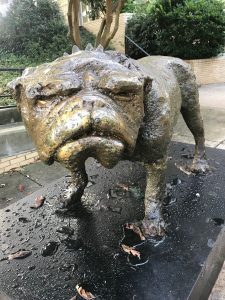
An article about the preparations for this year’s Indianapolis 500 race caught my eye last week. In the story, Indy Star reporters check the claim made by the organizers that the balloons they release every year to celebrate the event are biodegradable and thus pose no threat to the environment. Perhaps unsurprisingly, the reporters found this claim to be false. At the end of their tests, “all of the balloons were still well enough preserved to pose the types of risks feared by wildlife officials.” In other words, the balloons aren’t really biodegradable, and even if they were, they are still dangerous for wildlife.
Balloon releases have been a pet peeve of mine for a long time – it’s just sanctioned littering, except the trash doesn’t clutter up the area where the balloons are released. Instead, some other community, whether human or animal, has to deal with the (literal) fallout. It is truly one of the most environmentally irresponsible things we can do, and it is in no way a crucial component of life here on earth. No one dies if you don’t release hundreds of balloons into the atmosphere, but wildlife will die when your sky trash falls back to earth. From the article: “Emma Nelson, a biologist from the U.S. Fish and Wildlife Service, said that some species, including sea turtles, mistake debris from balloons and plastic bags for food. The animals either suffocate to death or starve with a belly full of plastic.”
In the months leading up to the Indy 500, a billboard appeared in Indianapolis about a mile from the Speedway that said “BALLOONS POLLUTE AND KILL. #StopLitteringIMS BalloonsBlow.org.” The media company that owns the billboard took it down early, supposedly due to pressure from the Speedway organization, although a spokesperson denied this. The media company, Outfront, claimed the billboard mistakenly slipped by them and should not have been put up because it was “an attack ad.” Apparently, attacking pollution is too bold a stance for outdoor advertising.
There was one other element to this story that I found interesting, in the article about the balloon testing: “Even the Balloon Council, which represents the industry, changed its stance on balloon releases last year from neutral to opposed. The group now recommends that balloons be weighted or tied down, and then popped and disposed of after they’re used.” Wait, what? There’s a “Balloon Council”?
Continue reading






